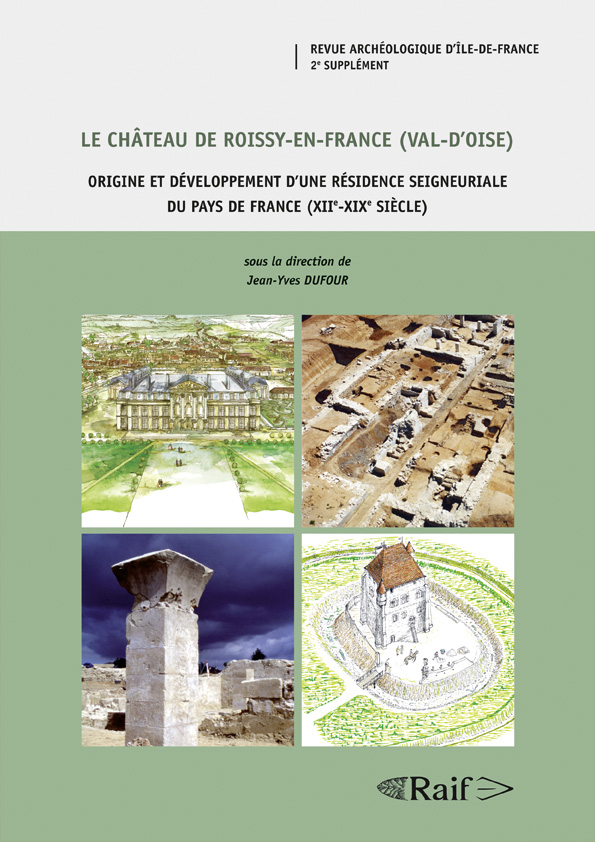 |
Supplement 2 - ISSN 2101-3608 - ISBN 978-2-7466-7171-3 - publication date: 2014 - number of pages: 617 |
![]() Download this volume (312 Mo)
Download this volume (312 Mo)
THE CHATEAU OF ROISSY-EN-FRANCE (VAL D’OISE)
ORIGIN AND DEVELOPMENT OF A SEIGNIORIAL RESIDENCE IN THE PAYS DE FRANCE (12th-19th CENTURY)
Editec by Jean-Yves DUFOUR
Archaeological excavation of the Roissy-en-France castle has provided the first opportunity for a complete study of the creation of an earth-work fortification and its progressive transformation within a non-fortified residence.Between the 12th and the 18th centuries, seven stages in the evolution of this aristocratic residence have been observed: two timber-post dwellings are succeeded by a fortified house, a tower, a manor-house or "hostel", a classic stately-home and finally a country-house well-known to art historians. Occupation continues in the farm-yard during the 19th century. Excavation concerned all the main buildings but also 3000 m² of the farm-yard, a rare opportunity to examine a too-often neglected or hidden aspect of a castle. Archival evidence related to the site and the Roissy domaines, pottery and animal bone assemblages, metal and glass artefacts, seed identification and geo-archaeological analyses (mortar, soils, phytoliths) are presented by chronological phase. In addition to the archaeology, the present publication addresses the Roissy lords’ history, their economic and cultural connection with Paris and their relationship with close-by royal power in the Ile-de-France.

 FR
FR  EN
EN 




